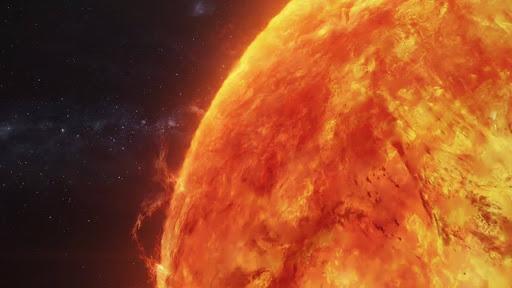
‘Peacock Jets’ on Sun Linked to Magnetic Flux Cancellation
The Sun, our star, has been the subject of human fascination for centuries. Its mesmerizing beauty and incredible power have captivated scientists and astronomers alike. Recently, researchers have made an exciting discovery about the Sun’s behavior, which has significant implications for our understanding of space weather and the protection of our technology. Meet the “peacock jets,” recurrent fan-shaped eruptions in the Sun’s lower atmosphere.
These jets, named for their striking resemblance to the majestic plumage of the peacock, are a fascinating phenomenon that has been observed many times before. However, scientists have now uncovered the underlying mechanism that powers these spectacular events. According to new research, the “peacock jets” are driven by magnetic flux cancellation, where opposing magnetic fields vanish, triggering energy release.
Magnetic flux cancellation is a process that occurs when two magnetic fields with opposite polarities converge and cancel each other out. This cancellation releases a massive amount of energy, which is then channeled into the formation of the fan-shaped jets. The scientists who made this discovery used advanced computational models and observations from the Solar Dynamics Observatory (SDO) to study the peacock jets.
The SDO is a spacecraft launched by NASA in 2010 to study the Sun’s internal dynamics and magnetic field. It has provided a wealth of data on the Sun’s behavior, including the formation of solar flares and coronal mass ejections (CMEs). The new research used this data to analyze the peacock jets and identify the underlying mechanism driving their formation.
The scientists found that the peacock jets are powered by the cancellation of magnetic flux in the Sun’s lower atmosphere, just above the surface. This region is known as the photosphere, and it is where the Sun’s light is produced. The magnetic fields in this region are highly dynamic and can become twisted and tangled, leading to the formation of complex magnetic structures.
When two of these magnetic structures with opposite polarities converge, they cancel each other out, releasing a massive amount of energy. This energy is then channeled into the formation of the fan-shaped jets, which can reach heights of up to 10,000 kilometers (6,200 miles) above the Sun’s surface.
The discovery of the peacock jets’ connection to magnetic flux cancellation has significant implications for our understanding of solar dynamics and space weather. Space weather refers to the dynamic and variable conditions in space that can affect our technology and infrastructure. The peacock jets are an important component of this space weather, as they can produce powerful solar flares and CMEs that can impact Earth.
These events can cause a range of problems, including radio blackouts, communication disruptions, and even damage to our technology infrastructure. By understanding the underlying mechanism driving the formation of the peacock jets, scientists can better predict when these events are likely to occur, allowing us to take steps to protect our technology and safeguard our infrastructure.
The discovery of the peacock jets’ connection to magnetic flux cancellation is a significant breakthrough in our understanding of solar dynamics. It highlights the complex and dynamic nature of the Sun’s behavior and the importance of continued research into the mechanisms that drive its activity.
As scientists continue to study the peacock jets and other solar phenomena, we can expect to uncover new insights into the Sun’s behavior and its impact on our technology and infrastructure. This research has the potential to revolutionize our understanding of space weather and our ability to predict and mitigate its effects.
In conclusion, the discovery of the “peacock jets” and their connection to magnetic flux cancellation is an exciting development in the field of solar physics. This research has significant implications for our understanding of solar dynamics and space weather, and it highlights the importance of continued research into the mechanisms that drive the Sun’s activity.
By studying the peacock jets and other solar phenomena, scientists can gain a deeper understanding of the Sun’s behavior and its impact on our technology and infrastructure. This knowledge can be used to develop more accurate prediction models and to take steps to protect our technology and safeguard our infrastructure.
As we continue to explore the Sun and its behavior, we are reminded of the incredible complexity and beauty of our star. The peacock jets are just one example of the many fascinating phenomena that occur on the Sun, and they serve as a reminder of the importance of continued research into the mechanisms that drive its activity.
News Source:






